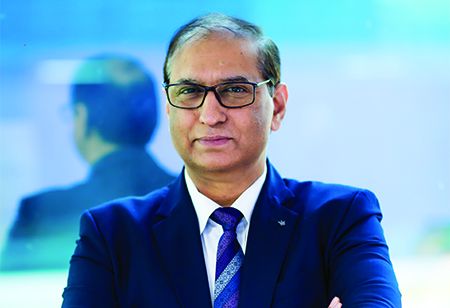
In an exclusive interview with Industry Outlook magazine, Kamal Verma, CEO of Water Business Group, Triveni Engineering & Industries Ltd, shares his view on how the PPP Model is driving Technology Adoption, how technological advancements Facilitate Efficient Water Management and more. He is an expert civil engineering professional with over 35 years of cross-functional experience handling EPC and infrastructure development projects for numerous conglomerates across India.
Being the most populated country in the world today, India is home of with 17% of global population and with only four percent of global freshwater water stock. As a result, we are currently facing a severe scarcity of fresh water across the country, and this is expected to worsen even further in the coming days if not addressed effectively. One of the primary reasons that is aggravating the water shortage issue in the country is the over-exploitation of groundwater, wherein we extract more water than the US and China combined. Thus, there is an immediate requirement for India to adopt effective water management practices such as water conservation, efficient water distribution across urban areas, reduction of non-revenue water, and most importantly, recycling & reuse of wastewater for municipal and industrial purposes. The government too is now proposing regulations to ban the usage of groundwater for industrial processes. Additionally, the Power Ministry of India has already made it mandatory for all thermal plants within a 50km radius to use treated sewage water for their processes.
Since the operation and maintenance period is 15 years in HAM/ PPP models, companies are extremely vigilant in integrating any new technology or high-end equipment to cut down their OPEX as much as possible. Although this will result in higher EPC costs, the overall lifecycle cost over the 15-year time period will be low. This way, the HAM/ PPP model is enabling organizations to integrate technologies and best-in-class equipment into their existing plants with lesser risk, better quality, and higher returns.
Due to age-old pipeline networks that are used in India today, leakage of drinking water has been a huge concern for a long time now. Recent estimates indicate that between the source to the endpoint, 60 percent of the water is wasted due to pipe leakages and deemed as non-revenue water, and only the remaining 40 percent reaches the end customers. Thus, the water boards and municipal corporations are now increasingly integrating the latest technologies into their water distribution networks to solve this water wastage. While IoT is enabling them to detect leakages along the pipeline and immediately take remedial measures, data analytics is enabling organizations to optimize the water distribution network in such a way that water is supplied to all regions as per the demand there.
On the other hand, with the National Green Tribunal revised the discharge standards for the sewage treatment plant in urban areas in 2019 and expected to cover entire country in future , many old STPs, manufacturing plants and other industrial setups are integrating the latest techniques to comply with the new standards. Some of the prominent tech advancements in the wastewater management area include Membrane Bed Bioreactor (MBBR), Sequential Batch Reactor (SBR), Ultra-Filtration, and Zero Liquid Discharge using MEE or MVR. Additionally, high-pollution industries such as textiles and printing units are heavily relying on CETP, Ultrafiltration and Reverse Osmosis, and many other modern techniques to stay compliant with the regulatory policies. What's more encouraging from an industry standpoint is that both central and state governments are providing grants and incentives for businesses to integrate these new technologies with ease without having to worry about capital investment.
Currently, the water sector in India is a state subject governed by third-layer bodies such as municipal corporations or water boards. As a result, the sector is very much underfunded and has very scarce or zero opportunity for innovation. Going forward, the HAM/ PPP model is expected to drive innovation for maintaining discharge standards and spreading awareness to local State bodies, forcing them to integrate cutting-edge technologies and modern equipment into their existing plants to reduce overall OPEX. Also, to govern the water sector in the country and encourage its growth, there is an immediate need for the Indian government to come up with a centralized body that must be responsible for the efficient operation of the water sector across the entire nature.
We use cookies to ensure you get the best experience on our website. Read more...